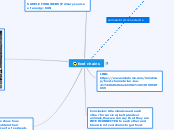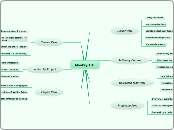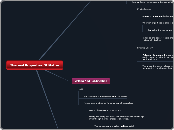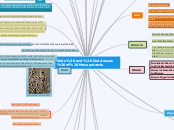FORCES
Firctional Force (friction)
Opposing movement, this force exists between surfaces rubbing against each other
Problems with friction
Makes objects move slowly
MACHINES WORK LESS EFFICIENTLY
Makes things/objects overheat
Causes wear and tear
Types would become smoother
over time - vehicle may slip on
wet surfaces
Soles of shoes wear out - a person
wearing them cannot walk properly
and may slip and fall.
Uses of friction
Produces Heat
Friction between the head of a match and the surface it is rubbed against produces enough heat to light the match, setting the match on fire.
Making a fire from friction
Energy conversion from forces: A push force exerted on the match stick allows it to rub at a high friction against a surface. Since the matchstick can catch fire easily, it has Chemical Potential Energy. When the push force overcomes the friction, it creates a reaction that creates heat through the rubbing of objects against each other, causing enough heat for the chemical potential energy from the match stick to become heat and light energy, or to light up, in general.
Allows us to control movement
Friction between vehicle tires and roads
allows vehicles to slow down and
come to a stop when the brakes are applied.
Reduces slipping and sliding
Friction between the sole of our
shoes and the ground enables us to
walk and run without slipping.
Elastic Spring force
Exerted by elastic objects (like rubber bands) that can cause an object to move/stop/change direction [goes back to their original shape after being stretched/compressed]
Gravitational Force (Gravity)
Causes things to have weight
Exists between objects that have mass (example: a ball)
Pulls objects toward Earth
Magnetic Force
Attraction and repulsion of forces exerted by magnets
A PUSH or PULL can cause an object to:
.To start to move
.To increase or decrease its speed
.To stop moving
.To change the direction of movement
.Change the shape of it
PUSH
PULL
Primary Six Science curriculum TOPICS
ECOSYSTEMS
ENERGY
Nuclear energy
Electromagnetic energy (Radiation)
Nuclear power plants
The Sun
Kinetic energy
Any moving object has movement energy, or kinetic energy. When a hockey player swings his hokey stick to hit the puck, the stick has kinetic energy at the swing, before passing it to the moving puck. When you throw a ball, the ball will also have kinetic energy.
Example: When a cricket player hits the moving ball, the ball has kinetic energy. In order for the cricketer to change of the direction of the ball, he must exert a push force, larger than the amount of energy contained in the ball, on the baseball bat to the ball, hitting it away, although the ball would eventually fall down, due to the gravitational force pulling all objects towards Earth. The more kinetic force exerted on the ball, the further it would travel.
EXAMPLE 2: If you eat food the gain energy
for the different stages of life, is there a
way to prove that? A running man cannot run
forever (UNLIKE THE GIF ABOVE). A theory of
energy can actually be used in this senario,
and says that when we eat food, it's calories,
vitamins and energy is stored in our body as
chemical potential energy. The energy is then
used for our life processes, like respiration
and maturity, and soon we run out of energy.
If you run for a distance, your energy will slowly
be changed into kinetic energy from the leg and
hand muscles, and you will also get tired gradually.
Light, heat and sound energy
Potential energy
Chemical Potential
chemical potential, also known as partial molar free energy, is a form of energy that can be found in food, and others. It is also the type of energy that is stored in humans after we eat something. For instance, a cooked steak has Chemical potential energy. When we humans eat the steak, chemical potential energy is stored in us for life processes to carry on in our lives. When we go for a jog, we can say that the Chemical potential energy from the food we eat is being converted into kinetic energy and some energy is also being converted into heat and sound energy through our breathing and the friction of our shoes.
Other examples of Chemical potential energy are:
FOOD
When animals take in food, they use it as energy,
together with oxygen and water, for life purposes,
such as maturity, movement, respiration and reproduction,
hence we can conclude that all food is a sourse of chemical potential energy that is converted to energy we need to survive.
Example: Cheese comes from cows, which eat plants, which also contains starch and sugars, or energy for our daily life processes.
Batteries
Subtopic
FUELS
Fuels, or anything that can catch on fire, contains
Chemical Potential energy.
Examples include FIRE itself, COAL, CHARCOAL, GASOLINE and WOOD. Examples of using this energy include: /
People using charcoal to make a fire
[chemical potential energy - heat energy + light energy]
Elastic Potential
Gravitational Potential
Main Producer: Sun (main source of energy for plants and animals)
Quaternary consumers
{PREDATORS}
THE QUATERNARY CONSUMERS [NOT IN THE FOOD CHAINS]
THESE ANIMALS ARE ACTUALLY THE TOP PREDATORS. THEY CAN EAT ANYTHING, AND IS LOCATED RIGHT AT THE TOP OF THE FOOD CHAIN AND COUNTED AS THE HIGHEST IN RANK, OTHER THAN THE TERTIARY CONSUMERS. ANIMALS LIKE THIS INCLUDE LIONS, TIGERS, GREATWHITES
AND CROCODILES. THEY ARE ALSO KNOWN AS THE
APEX PREDATORS. WHEN THESE ANIMALS CONSUME ANY ANIMAL FROM THE FOOD CHAIN, THEY GAIN ENERGY FROM THE FOOD AND MEAT THEY EAT.
Secondary Consumers
THE SECONDARY CONSUMERS IN THE FOOD CHAINS
ARE THE ANIMALS THAT CONSUME THE PRIMARY CONSUMERS, ANIMALS LIKE FOXES AND SNAKES. THESE
ANIMALS GET THEIR SOURCE OF ENERGY FROM THE
PRIMARY CONSUMERS, AS IN: WHEN THE PRIMARY CONSUMERS CONSUME THE PLANTS, THEY STORE IN THE ENERGY FROM THE PLANT'S SUGAR FOR THEM TO SURVIVE. SO WHEN THE SECONDARY CONSUMERS CONSUME THE PRIMARY CONSUMERS, THEY RECEIVE THE ENERGY FROM THE THE PRIMARY CONSUMERS FOR SURVIVAL, TOO.
Primary Producers
THE PRIMARY PRODUCERS IN THE FOOD WEBS
ARE ACTUALLY PLANTS. THESE PLANTS WILL
STORE THE LIGHT FROM THE SUN [SUNLIGHT]
AND CONVERT IT WITH CO2 TO CREATE A SUBSTANCE CALLED SUGAR, OR SAP [FOOD FOR THE PLANT].
WHICH WILL BE TRANSFERRED TO ALL LIVING THINGS DIRECTLY OR INDIRECTLY DEPENDING ON
THEIR PLACE ON THE FOOD WEB.
MORE ABOUT PHOTOSYNTHESIS:
FOR PHOTOSYNTHESIS TO OCCUR,
SUNLIGHT AND CARBON DIOXIDE IS NEEDED. WHEN THE PLANT HAS COLLECTED ENOUGH OF THE SUBSTANCES, THE PROCESS WILL TAKE PLACE IN THE LEAVES, WITH THE HELP AND ACCOMPANIMENT OF WATER, SUGAR IS CREATED EXCESS FOOD, CALLED ' AND STORED IN THE LEAVES. THE PLANT WILL ALSO RELEASE OXYGEN FOR ANIMALS TO TAKE IN FOR RESPIRATION TO OCCUR, BRINGING CARBON DIOXIDE BACK TO THE PLANTS FOR PHOTOSYNTHESIS TO OCCUR AGAIN. THIS GOES ON AND ON LIKE A CYCLE.
All Living things depend either directly or indirectly on the Sun.
SOIL
HOW DID THE SOIL GET IT'S NUTRIENTS?
THE ANSWER IS SIMPLE. ANSWER:
DECOMPOSERS! EXAMPLES OF IT INCLUDE:
FUNGI IN VARIOUS KINDS, BACTERIA
HOW DO THE DECOMPOSERS DO IT? SIMPLE: WHEN ANY LIVING THING PASSES AWAY, IF THERE IS ANY TYPE OF FUNGI OR BACTERIA NEARBY, THEY WILL FEAST ON THE ANIMAL IF NO ONE EATS IT FIRST!
AFTER THE FUNGI AND BACTERIA FINISHED FEASTING ON THE DEAD ANIMAL, THE NUTRIENTS AND FERTILIZERS MIX IN WITH THE SOIL, MAKING IT NUTRIENTS FOR THE PLANTS! AMAZING, RIGHT? THAT IS ALSO WHY DECOMPOSERS ARE MOSTLY FOUND WHERE THERE ARE A LOT OF TREES AND PLANTS! EXAMPLES INCLUDE:
MUSHROOM-LIKE FUNGI LIKE THIS ONE
Tertiary Consumers
THE TERTIARY CONSUMERS IN THE FOOD CHAIN ARE
THE ANIMALS OF HIGHEST RANK. THEY HAVE ALMOST NO PREDATOR AND INCLUDE ANIMALS SUCH AS AN OWL. THESE ANIMALS OBTAIN THEIR ENERGY FROM THE SECONDARY CONSUMERS TO ENSURE SURVIVAL IN THEIR KIND. THEY CAN ALSO USE ENERGY TO HUNT, RUN AND TO FEED THEIR YOUNG.
Primary Consumers
THE PRIMARY CONSUMERS IN THE FOOD WEBS INCLUDE
GRASSHOPPERS, MICE, SQUIRRELS AND RABBITS.
THESE HERBIVORES SNACK ON PLANTS TO RECEIVE ENERGY, OR THE SUGARS STORED IN THE PLANTS STEMS, ROOTS, LEAVES FLOWERS, OR MAYBE EVEN THE FRUITS OF THE PLANT.
food chains
The food Chain is a chain showing and indicating the flow of energy that passes through from one animal to the other.
Today, I am going to show how animals and plants obtain their energy by the source of a food web.
Firstly, the......
SAMPLE FOOD WEBS [Primary source of energy: SUN
RABBIT
SQUIRREL
BERRIES
MOUSE
FOX
LEAVES
GRASSHOPPER
FROG
SNAKE
OWL
Conclusion: All animals need each other for survival, be it plants or animals, thus we can say that they are INTERCONNECTED to each other and blend in in food chains to get food.
LINK: https://www.mindomo.com/mindmap/food-chains-brian-lee-417446d6262a42258713910f9058f655









